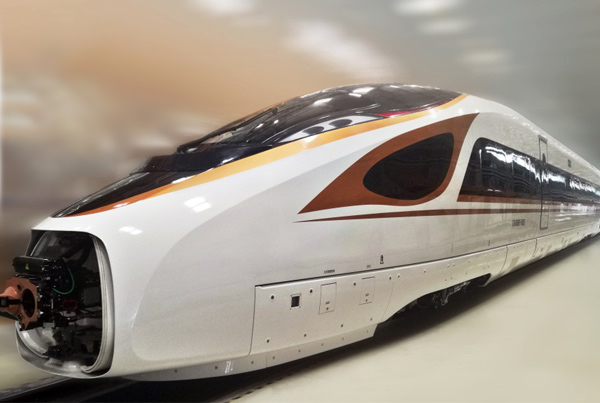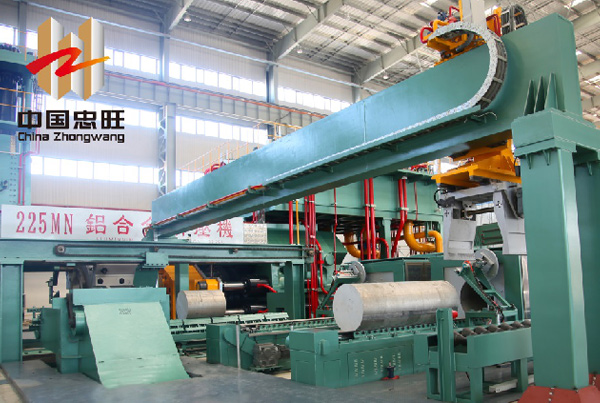
China Railway Corporation debuted its “Fuxing Hao” (Renaissance), a new electric multiple unit (EMU) bullet train, on its Beijing to Shanghai route, running at 350 km/h (as of September 23, 2017). The Renaissance EMU is the first bullet train designed and manufactured entirely in China. The use of lightweight aluminum components was key in providing the enhanced speed, safety, and comfort of the new train design. A variety of extrusion profiles and deep-processed aluminum components for the Renaissance EMU train were supplied by China Zhongwang.
“The aluminum products used in China Standardized EMU trains have passed demanding third-party qualifications, the criteria of which were stricter than those used in Europe,” said Cai Hunan, vice general manager of China Zhongwang.
Trains traveling at speeds of 200km/hour or more require lightweight materials that are highly corrosion-resistant and are able to achieve a tight seal. Aluminum is an ideal material for the train body application due to its high strength-to-weight ratio, high ductility, and low susceptibility to corrosion. According to China Zhongwang, high-speed trains that travel at speeds of over 350km/hour need to use aluminum profiles for the entire train compartment except for the chassis.
China Zhongwang worked alongside China Railway Rolling Stock Corporation (CRRC) to resolve challenges in the integration of extrusions used in high-speed rails. “We’ve overcome a number of technical challenges in this project,” said Hunan. “For example, as compared to the CRH380 bullet train, the sections of aluminum alloy used in the train bodies of Renaissance EMU are at least 100 mm wider, and some parts are 5 mm to 20 mm taller, which requires high-edged extrusion technologies to manufacture.” Rather than welding together two smaller extrusions to form these components, China Zhongwang extruded ultra large-sections on its 225 MN extrusion press one at a time.

China’s high-speed rail system is in rapid development. By the end of 2016, the operating mileage of the system exceeded 22,000 km, accounting for over 60% of the total railway mileage around the world. According to asset management company Zheshang Securities the Renaissance EMU bullet train represents China’s new standard for high-speed rail and the main direction of future development, with an estimated market of about RMB600 billion (over US$90 billion) through the replacement of the current CRH bullet trains and the installation of additional infrastructure throughout the country.
The new EMU is also expected to have potential in overseas markets. According to He Huawu, Chief Engineer of the China Railway Corporation and an academic at the Chinese Academy of Engineering, the China Standardized EMU will be applied in a high-speed rail project in Indonesia and the Renaissance bullet train will become the leading model of China’s high-speed rail in overseas markets.
The bright prospects and huge market potential for China’s high-speed rail should drive development across the industry chain. “In the past, Chinese players were not able to produce certain aluminum products such as the aluminum alloy sections used in bullet train cabins. As a result, they had to rely largely on imports, which raised processing and other costs,” said Lu Changqing, executive director and president of China Zhongwang. “But now China Zhongwang and other Chinese companies are fully capable of manufacturing the high-quality aluminum extrusion products applied in high-speed rail projects.”
